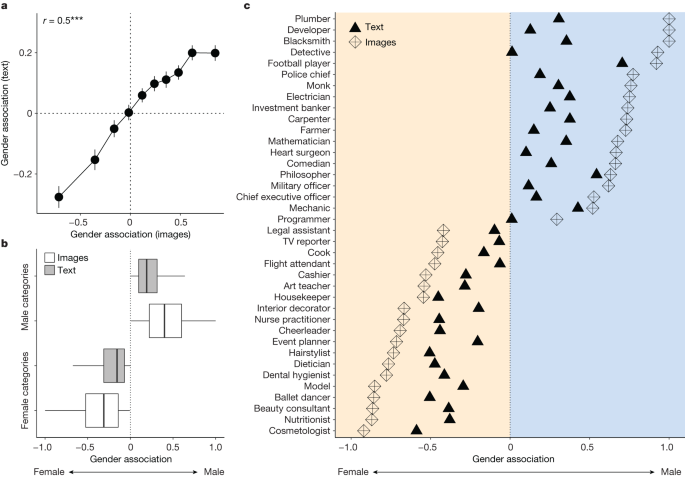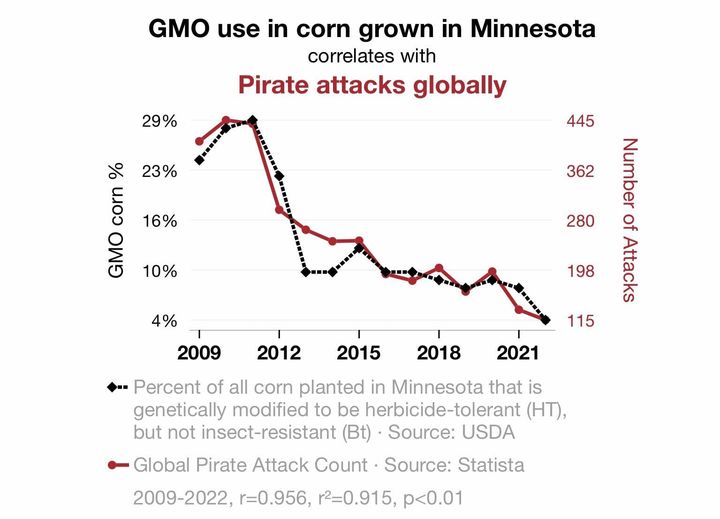And the authors of a new paper say female and male gender associations are more extreme among Google Images than within text from Google News; text is slightly more focused on men than women, this bias is over four times stronger in images.
The problem can't be Google, Google News is just a search for way to search reputable outlets for news events. Science 2.0 is in Google News. The issue is the outlets producing the news. Profit-driven media corporations want to draw in viewers to see ads, which means the studies they cover will be geared toward the audience their advertisers want - show me an outlet producing 'chemicals are killing us, food is medicine, etc.' articles and I can tell you how their audience votes with far higher accuracy than expensive surveys.(1)
The authors note that college students who looked at gender-biased images—as opposed to those reading gender-biased text—demonstrated significantly stronger biases even three days later. Yet bias is in the eyes of the beholder, and no one is more biased than scholars who study bias.
Bias Scholars Are Calvinists of Culture: You're All Sinners
Bias scholars are often Calvinists of Culture. You're all sinners, and those who think they are not sinners are the biggest sinners of all.
Are images a great way to get a point across? Of course, that is why print ads are valued, and it is also a way to capitalize on stereotypes. It is difficult to find an ad on commercial television where a white father is not a buffoon while the kids or the mother endure his cloddishness and work around his incompetence (companies selling power tools obviously don't do that) while ads targeting women show women laughing, having fun, and feeling empowered. But do ads create stereotypes? That is less clear. Men being buffoons in ads is not turning men into buffoons, it is a way for marketing agencies to instead look like they are affirming women.
Yet the existence of images featuring women, or not featuring women, is evidence that the world is sexist, according to scholars in the bias field. Their evidence, unfortunately, is a Large Language Model, colloquially called AI by everyone selling ways to use it but really just a fancy autocomplete utility. The overwhelming majority of scholars outside fields like experimental physics (or statistics) don't know how to use statistics(2), so those folks sure don't know how to use an LLM. This was a little simpler so less room for obvious error. They used 3,495 categories including professions like “soldier”, occupations like "plumber" and cuitural terms like “friend” and then just looked at the top 100 images.
They then got participants to search for terms using Google News in regular form and using the image tab. Then they stated which gender belonged to which occupation. A control group got neutral terms, like a piece of fruit.

This is where it may fall apart in the real world, though. If you picture a teacher as female, are you sexist or is it that 70% of teachers are women? The social sciences are far more dominated by women than plumbers are by men but if you are told to imagine the gender of a plumber and you choose a man, that will be deemed evidence of bias. Except it isn't, any more than if you are told to imagine a Harvard faculty member and are asked to guess if they are Democrat or Republican.
The interesting thing to the authors was that images are, in their estimation, more biased than text but anyone who writes on the Internet knows something important the authors may not; Google penalizes you if you don't have an image, just like they penalize you if you created your news site with older CMS tools. Images are often selected automatically. Editors know that women want to see women whenever possible...and so do men.
That is not reinforcing stereotypes, it is instead not sacrificing your media company revenue on the altar of social justice.Yet if the results have an air of truthiness, and you have a bias in favor of, you guessed it, bias, you are going to run with the results - Google News is gender biased. And Nature will publish them, because they have their own bias and like any positive result that matches their ideological narrative.
NOTES:
(1) Their journalists may believe they are objectively reporting the news, without considering the bias in their company - they only hire people reliably covering what they want covered. If you are a corporate conspiracy theorist at Boston Globe pushing claims by lawyers at the lawsuit-funded Center for Science in the Public Interest you are certain to get hired at the New York Times.
And they will libel you on Twitter if you dare to mention that they are stans for a sue-and-settle sexist pig who routinely colluded against scientists. I did have a speeding ticket once, but that hardly merits calling me a felon. Yet that is the kind of fact checking journalists pushing an agenda don't engage in. They know they have the corporate platform and you don't.
Environmental, progressives, and chemophobic screeds are also a great way to get a 'fellowship' from the NYU School of Journalism, official groomers of the anti-science left.

(2) It is why there are so many spurious correlations gushed over by progressive journalists who think CSPI or Center for Food Safety or Center for Biological Diversity are anything more than lawsuit groups lobbying for government regulations they can use in lawsuits.
Epidemiology shows that GMO corn grown in Minnesota correlates to a drop in pirate attacks. If you believe pickles or cell phones cause cancer, you can't deny the GMO corn-pirate link, because corn and pirates is actually better methodology than the claims about pickles or cell phones; p < 0.01!

Why doesn't the Washington Post cover this epidemiology? Maybe it is a Big Food conspiracy. The $120 billion organic food industry lined up against conventional farmers, that is.




Comments